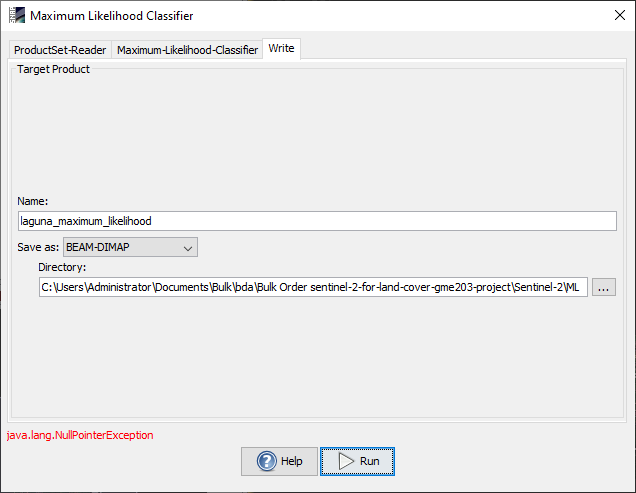

Attempting to change the color of the light in the try block causes a NullReferenceException which is picked up by the catch block. If this variable is not set, then it will default to null.
#Null pointer exception gprojector code#
In this code example, the variable called myLight is a Light which should be set in the Inspector window. Public Light myLight // set in the inspectorĭebug.Log("myLight was not set in the inspector")

For example, this code: using UnityEngine A different way to deal with NullReferenceException is to use try/catch block. If you forget to do this, then the variable will be null. Try/Catch BlocksĪnother cause for NullReferenceException is to use a variable that should be initialised in the Inspector A Unity window that displays information about the currently selected GameObject, asset or project settings, allowing you to inspect and edit the values. If it is null, then we display a message. Now, before we try and do anything with the go variable, we check to see that it is not null. GameObject go = GameObject.Find("wibble") ĭebug.Log("No game object called wibble found") The solution in this simple example is to change the code like this: using UnityEngine Because we are accessing a game object that doesn’t exist the run-time gives us a NullReferenceException Null ChecksĪlthough it can be frustrating when this happens it just means the script needs to be more careful. On the next line (line 9) we use the go variable and try and print out the name of the game object it references. In this example there is no game object with that name, so the Find() function returns null. The code simply looks for a game object called “wibble”. (class-GameObject.html)See in (Glossary.html#GameObject) go = GameObject.Find("wibble")

A GameObject's functionality is defined by the Components attached to it. _GameObject_ The fundamental object in Unity scenes, which can represent characters, props, scenery, cameras, waypoints, and more. In this example, the code is: //c# example This makes the Null Reference Exception easy to find and fix. Also, the message says that the exception happened inside the Start() function. This error message says that a NullReferenceException happened on line 10 of the script file Example.cs. The error message will look something like: NullReferenceException: Object reference not set to an instance of an objectĪt Example.Start () in /Unity/projects/nre/Assets/Example.cs:10

When you get a NullReferenceException in your code it means that you have forgotten to set a variable before using it. Hence, if you try and access the object that is being referenced and there isn’t one, you will get a NullReferenceException. Reference types default to null to indicate that they are not referencing any object. Reference variables in c# and JavaScript are similar in concept to pointers in C and C++. The run-time will tell you that you are trying to access an object, when the variable is null by issuing a NullReferenceException. If a reference variable isn’t referencing an object, then it’ll be treated as null. A NullReferenceException happens when you try to access a reference variable that isn’t referencing any object.


 0 kommentar(er)
0 kommentar(er)
